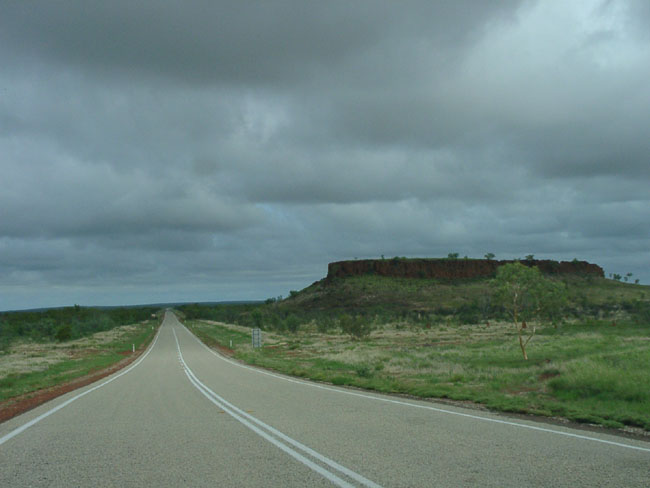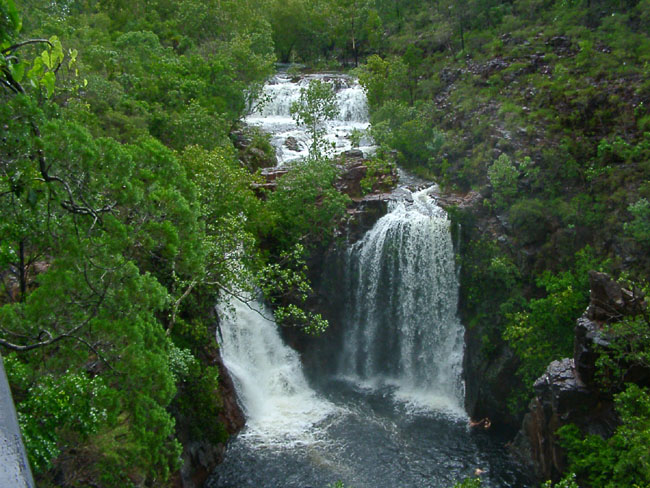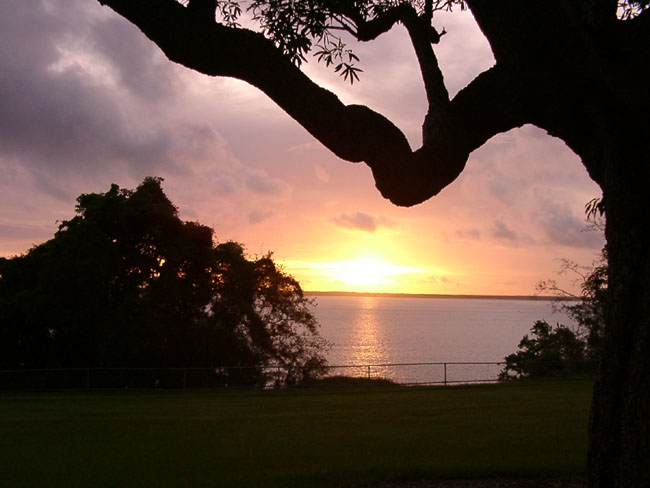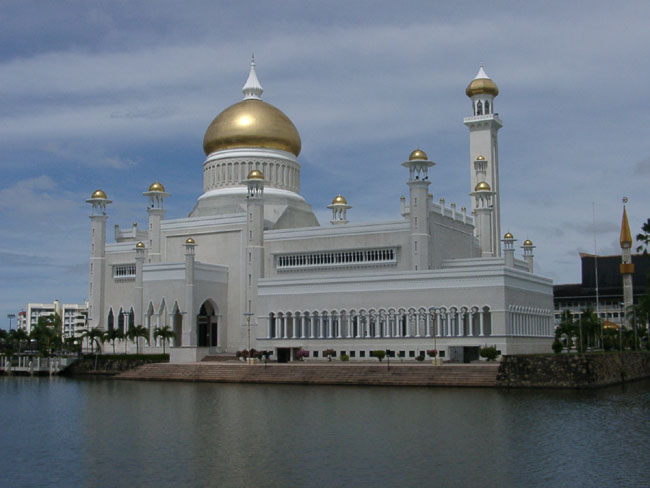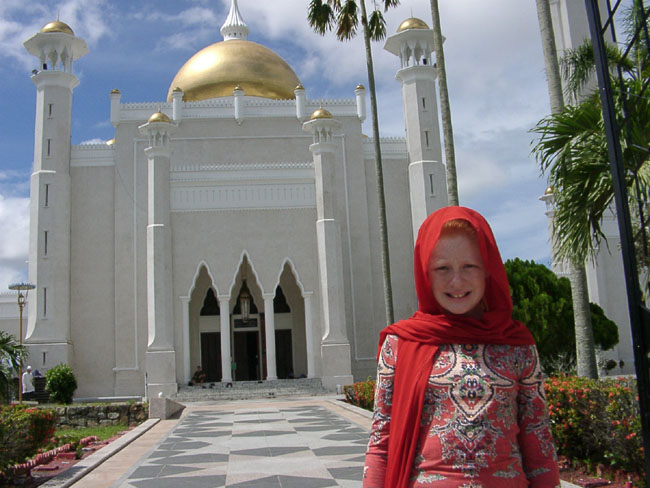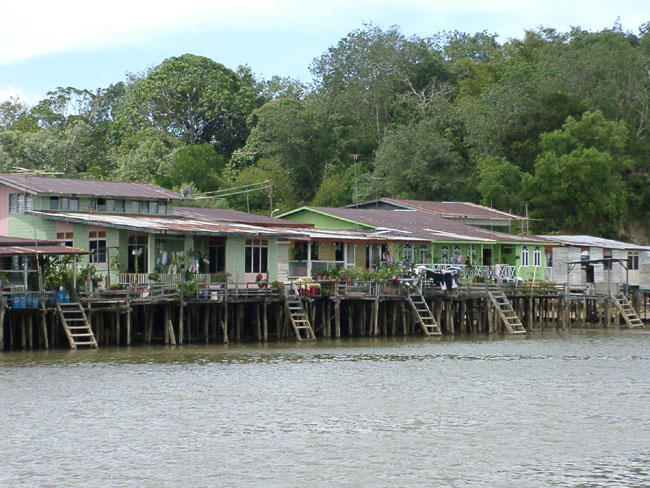| «Back to Previous Post |
Date: Monday, 29 December 2003 04:49 PST
Subject: Greetings from Brunei
Captions for photos:
1. The kids riding a camel at the Camel Farm in Alice Springs
2. View from the car driving between Alice Springs and Tennant Creek
3. Cooking Christmas dinner in Katherine
4. Florence Falls at Litchfield National Park outside of Darwin
5. Crock warning signs at Litchfield National Park
6. Sunset at Bicentennial Park in Darwin (Interestingly, this park commemorates 200 years of white settlement in Darwin, not Australia’s independence. Australia is still officially part of the British Commonwealth. Their constitution recognizes the Queen Elizabeth as the head of their country.)
7. Omar Ali Saifuddien Mosque in Brunei (We heard the call to prayers as we approached)
8. Kristen with a veil outside of the Omar Ali Saifuddien Mosque (women are required to cover their heads in order to venture inside of the mosque)
9. One of the 28 Kampung Ayer water villages
29 December 2003 – Day #100
We just arrived in the sultanate of Negara Brunei Darussalam (which translated means the Nation of Brunei, the Abode of Peace). Brunei is a quirky place located 1,800 miles northeast of Darwin, Australia on the island of Borneo. Just like the island of Hispaniola is shared by Haiti and the Dominican Republic, the island of Borneo is shared by Brunei, Malaysia and Indonesia. Brunei is a tiny country (just a dot on my map) with a population of just 340,000 people.
Brunei is ruled by his Majesty Sultan Haji Hassanai Boklaih Mu’izzaddin Waddaulah (this is not actually his full name but there are 10 more parts). His Majesty is also the Prime Minister, the Defense Minister, the Finance Minister and the second richest man in the world (the first being Bill Gates). Brunei’s fantastic wealth comes from oil that was discovered in 1929. His Majesty led his country to independence from Britain in 1984.
Of interest here in Brunei are:
- The Omar Ali Saifuddien Mosque (certainly one of the most impressive modern structures in the east)
- The Kampung Ayer (a collection of 28 water villages)
- Ulu Temburong National Park (75% of Brunei is covered by dense jungle; UT is one of many protected areas)
Today, we visited the inside and outside of the Mosque and two of the water villages (see pictures above). Tomorrow, we will visit the National Park by longboat and on foot (stay tuned).
When we last wrote to you, we were in Alice Springs, Australia (the center of the country known as the Outback). On our last full day in “Alice”, we visited a camel farm and a branch of the “School of the Air”. The camel farm had a fabulous educational museum. We learned that:
- Camels were imported to Australia from Pakistan and India beginning in 1866
- Only the one-humped camel (Camelus dromedarious) was found to be suitable to the hot, dry climate of the Outback
- There are approximately 200,000 camels still in the wild
After our visit to the museum, we all took the opportunity to ride a camel for a short distance. In case you were wondering, camels walk slow, so the ride is fairly smooth. However, you have to hold on because there is some movement front to back and side to side.
The School of the Air (SOA) is an organization unique to Australia. SOA provides distance learning for those children who are located in Australia’s remote areas (on cattle stations, at roadhouses, in mining towns or in eco-resorts). Besides the school in Alice, there are 16 other schools spread out over the whole of Australia.
Since the 1920’s, children in the Outback received their education by written correspondence. It was Adelaide Miethke who believed the radio could be used to provide a better learning experience. By 1951, the Alice Springs School of the Air held three half-hour sessions per week covering subjects such as literature, word-building and social studies. At first, all the lessons were one-way (the students could only listen); however, it wasn’t long before shortwave transceivers were given to the students to create a more interactive, two-way experience (the students could send and receive).
Today, the SOA in Alice Springs has 141 students (including about 30 Aboriginal students) ranging from preschool to 7th grade. Starting with 8th grade, students have the option of switching to correspondence courses or moving to boarding schools. Alice Springs recently received a US$4.5 million grant from the Australian government to shift some of its students from shortwave to the Internet. We saw a recorded Internet lesson while we were there.
We left Alice Springs on Christmas Eve and drove six hours to Tennant Creek. We drove another eight hours (through the rain) to Katherine on Christmas Day.
Katherine was small. The main street was only two or three blocks long. All the restaurants were closed on Christmas with the exception of the roadhouse at the BP gas station. Fortunately, Sandy had booked a hostel with a common kitchen and we planned to make dinner ourselves that night.
When we arrived at the hostel in Katherine, we found a note addressed to us by the manager. The hostel was closed and he directed us to a Best Western Motel owned by the same company around the corner. The good news is that we received a motel room at a hostel price. The bad news was we no longer had the use of a kitchen.
Darren happened to find an Australian couple in the exact same situation cooking outside of their room down the way from us. After explaining our predicament, they offered us their camp stove and a large pot. We enjoyed our dinner of spaghetti with roasted tomato pesto complimented by a bottle of Cabernet Sauvignon from Southern Australia.
The next day, we drove to Darwin. On the way, we visited Katherine Gorge and Litchfield National Parks. The flies were so bad at Katherine Gorge, we took a couple of “snaps” and left (at least the drive was nice). Litchfield was beautiful, wet, wild and virtually fly-free. Since it had been raining off and on all day, we snapped some great pictures of the park’s three engorged waterfalls before continuing the final leg over our 1,900-mile overland journey through the Outback.
Wishing you God’s Blessings,
Darren and Sandy
| «Back to Previous Post |


